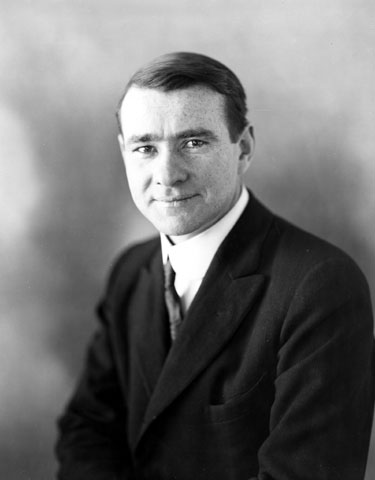
1888–1965
-
Geophysical Laboratory, staff member (1912 - 1952)
-
Geophysical Laboratory, acting director (1953)
-
B. S. in Chemistry, University of Minnesota, 1909
-
D.Sc., Alfred, 1939
-
Geological Society of America, fellow
-
American Ceramic Society, fellow
-
Chemical Society of Washington, treasurer, president
-
British Society of Glass Technology, fellow
-
Arthur L. Day Award (Geological Society of America)
-
Hillebrand Prize (Chemical Society of Washington)
-
Howard N. Potts Medal
|
George W. Morey joined the staff of the Geophysical Laboratory in 1912 and remained there until his retirement in 1953. He worked as an experimental petrology research scientist throughout his career, following a physicochemical approach to the problems of geology. His primary topics of study at Carnegie were phase-equilibrium relations in fundamental oxide systems and in systems of rock-forming minerals. During both World War I and II, Morey lent his support to the Laboratory’s optical glassmaking project for rangefinders, gunsights, and various other wartime equipment. Between 1952 and 1953, he served as Acting Director for the Laboratory before Philip H. Abelson stepped in officially as the new director in 1953. Morey’s laboratory research centered upon phase-equilibrium relations of silicate systems and the thermodynamics of phase-equilibria. He paved the way in the areas of silicate systems with water, carbon dioxide, and other volatiles as components. |
|||
|
|
|||
|
|||
|
|
|||
|
Over his lifetime, Morey published over one hundred papers. According to fellow staff member at the Geophysical Laboratory, J. F. Schairer, Morey “had the wonderful knack of devising a simple way to do a difficult job, and his wonderful theoretical background in thermodynamics and physical chemistry of heterogeneous equilibrium was the perfect combination to insure outstanding results. Those of us who had the good fortune to be associated with him will always remember his kindliness, patience, and endless stream of ideas for research into problems of mineral and rock origins that were a constant source of inspiration. Geology is richer because Morey lived and worked in the field of experimental petrology.” For more information on experimental petrology at the Geophysical Laboratory, please see Experimental Petrology's Long Road to Respect. |
|||
|
|
|||
|
References:
Further Reading:
|

